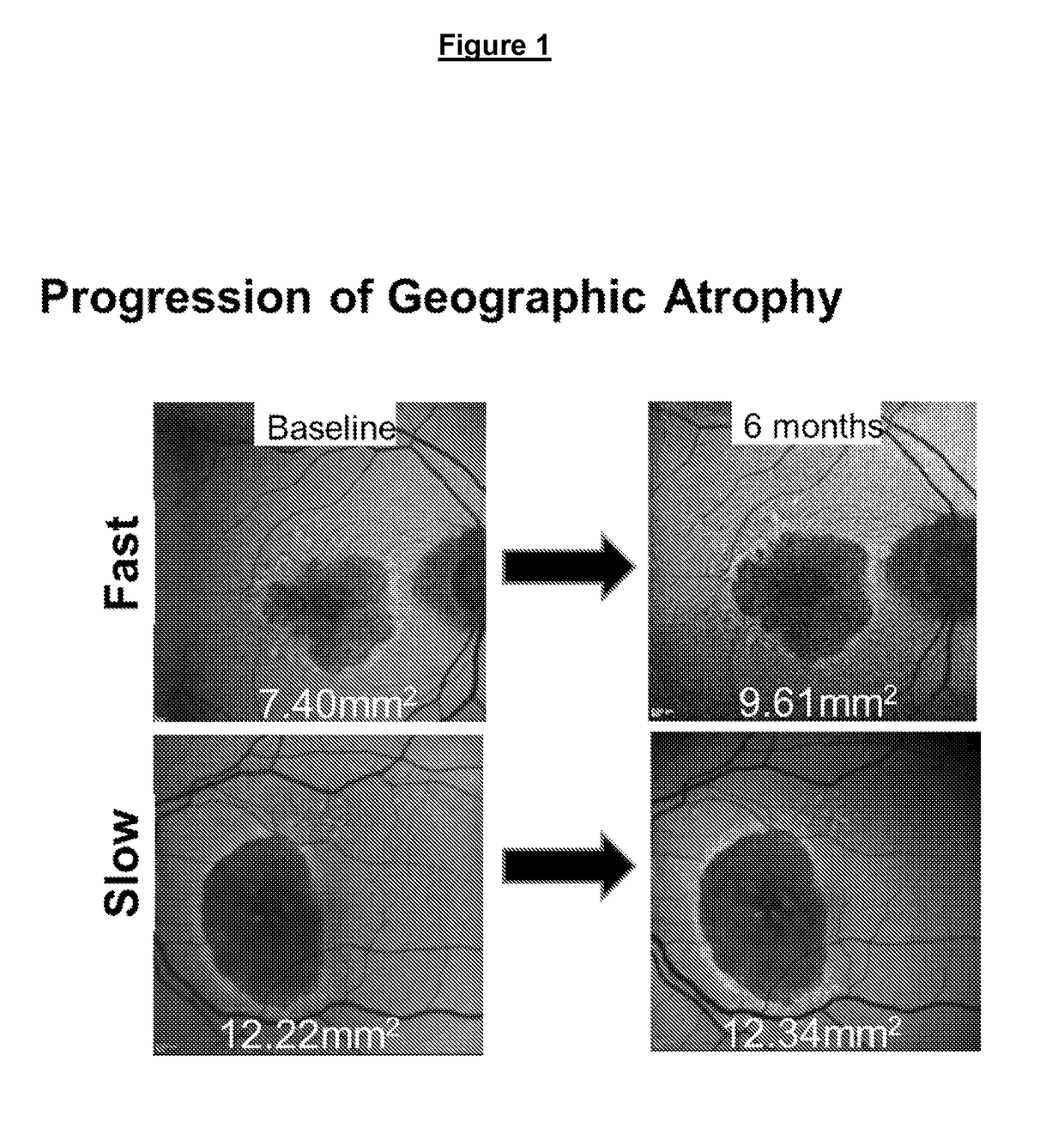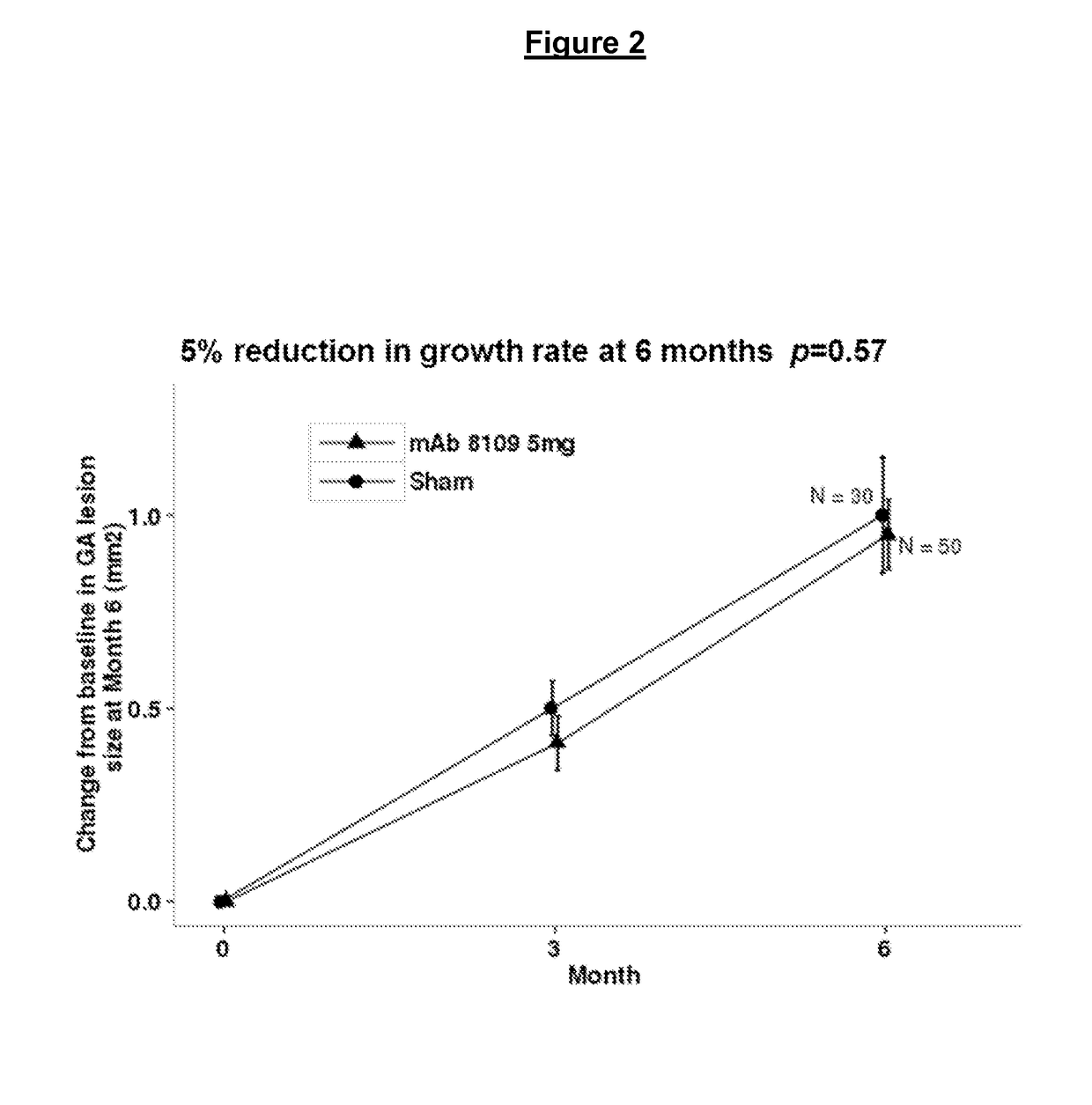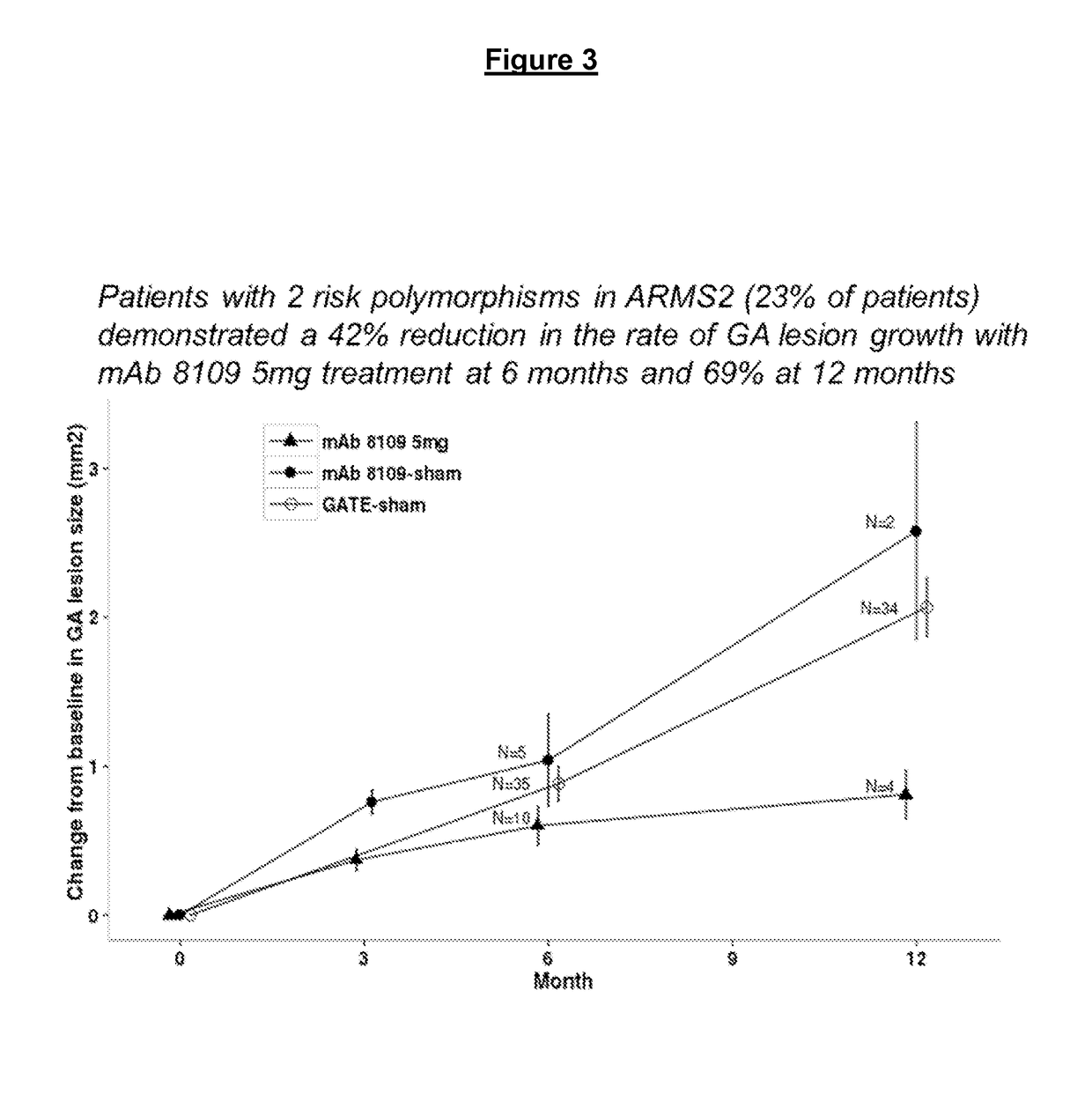Impact of genetic factors on disease progression and response to Anti-c5 antibody in geographic atrophy
a technology of geographic atrophy and antic5 antibody, which is applied in the field of measuring or testing process involving nucleic acids encoding proteins, can solve the problems of increasing the risk of developing advanced amd, no therapy currently exists to prevent the progression of ga, and affecting visual acuity. , to achieve the effect of increasing the subject's risk of ga progression
- Summary
- Abstract
- Description
- Claims
- Application Information
AI Technical Summary
Benefits of technology
Problems solved by technology
Method used
Image
Examples
example 1
Using FAF to Determine the Progression of GA
[0146]FIG. 1 shows the progression of GA over time. The top panel shows fast progression, showing 2.21 mm2 growth over 6 months. In contrast, the bottom panel shows a slow progression of GA, with just 0.12 mm2 over the same time period. This was done using fundus autofluoresence (FAF). FAF is a non-invasive method of imaging retinal disorders, especially those of the retinal pigment epithelium. Retinal pigment epithelium atrophy appears as a dark patch (FIG. 1) and can be clearly delineated and measured, and thus is a useful imaging tool for following the progression or regression of GA (Solbach et al. (1997) Retina 17:385-389).
[0147]In these experiments, a multicenter, randomized, sham-control, proof-of-concept study was performed, to test the efficacy and safety of monthly intravitreal administration of 8109 in patients with GA. The study was designed to test the effect of eighteen successive 5 mg / 50 μL doses of intravitreal (IVT) 8109, ...
example 2
Analysis of Risk Alleles Associated with GA
[0148]Using data from the sham arm of a study (referred to in FIG. 2 and FIG. 3 as “GATE-sham”), the genotype and clinical data from 441 patients with GA were analyzed. A significant association between the ARMS2 variant (rs10490924) and GA lesion size growth was detected. Patients who carried the ARMS2 risk allele (rs10490924) tended to progress faster than those who did not carry the risk allele (1 risk allele, p=0.022; 2 risk alleles, p=0.005). In addition, a cumulative effect of the CFH (rs1061170) and ARMS2 (rs10490924) risk alleles on GA lesion size growth was noted. Patients who carried the risk alleles tended to progress faster than those who did not carry the risk allele in the two genes (1 risk allele, p=0.007; 2 risk alleles, p=0.001; 3 risk alleles, p=0.001; 4 risk alleles, p=0.001).
[0149]There was no significant association between the CFB variant and geographic atrophy lesion size growth. The P-value of each of the risk allele...
example 3
Study to Identify a Subset of Patients that Respond to Anti-C5 Antibody Treatment
[0150]To measure the effect of anti-C5 antibody treatment of patients with GA fundus autofluorescence (FAF) was applied allowing quantitatively measurements during the treatment period.
[0151]Statistical Methods for Efficacy Analyses.
[0152]Evaluation of the drug efficacy was obtained from a statistical analysis of the change from baseline of FAF using analysis of covariance (ANCOVA) model with treatment and genotype as fixed factors. Baseline GA lesion size was included in the model as a covariate and the interaction between genotype and treatment was also evaluated in the model. The overall study population was split by the genetic marker to compare the difference of the treatment effect by anti-C5 antibody vs. sham. The difference of the treatment effect within genotype groups was evaluated using similar statistical model without interaction term.
[0153]Clinical Samples:
[0154]Genomic DNA from individual...
PUM
 Login to View More
Login to View More Abstract
Description
Claims
Application Information
 Login to View More
Login to View More - R&D
- Intellectual Property
- Life Sciences
- Materials
- Tech Scout
- Unparalleled Data Quality
- Higher Quality Content
- 60% Fewer Hallucinations
Browse by: Latest US Patents, China's latest patents, Technical Efficacy Thesaurus, Application Domain, Technology Topic, Popular Technical Reports.
© 2025 PatSnap. All rights reserved.Legal|Privacy policy|Modern Slavery Act Transparency Statement|Sitemap|About US| Contact US: help@patsnap.com



